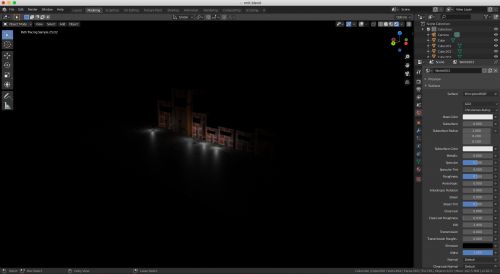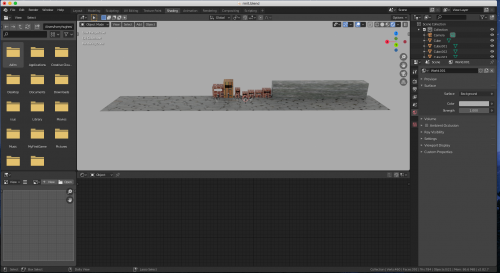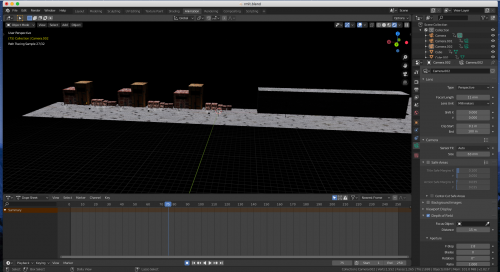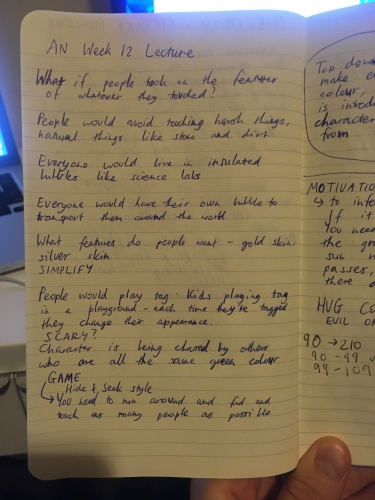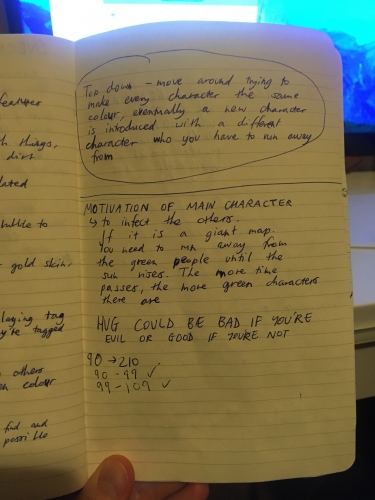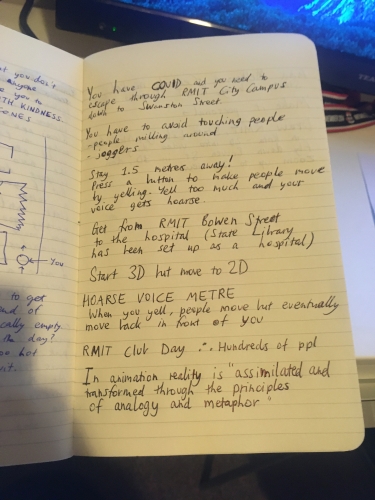This week I made a game prototype in Blender following the premise "What if people took on the features of whatever they touched?"
I began working on this premise in the class workshop and once again -after thinking up some very complex ideas- I decided to simplify the idea right down to very simple elements - a 2D game where you have to avoid getting touched by the red character, which is running around chasing people. Kate then suggested I think about the motivation of the character trying to change everyone's colour, which started me down the road of thinking about a narrative for this game world.
Because I am so far off making 3D animation that looks realistic, I think it is really important for me to make sure my game worlds have some kind of "real-world" feeling. In his essay "Chairy Tales: Object and Materiality in Animation" Paul Wells talks about animators who use puppets and other physical objects stressing "the tactility and substance" of these objects "as proof of a material reality beyond the virtual worlds of computer generated imagery". This sort of reminded me of the vacuousness I've sensed in a lot of the computer generated projects I've made, and indeed in a lot of the video work I've made over the years. They lack a certain presence and physicality that great art has.
So this week I really tried to focus on making the project a bit more personal and ended up coming up with a narrative that was set at RMIT in the days of Coronavirus. You play as the game red cylinder and have to run down Bowen Street to the State Library avoiding blue (healthy) cylinders (people). I thought of adding a circle around you- 1.5 metres- and if anyone comes within that circle they catch the disease and become red.
In the Jim Bizzocchi reading this week "Games and Narrative: An Analytical Framework" he says that environmental storytelling" not only provides a stage where story and game can play together, but can also evoke pre-existing narrative associations". Grounding this very simple 2D game in a world I know well immediately gives it a lot of weight. The simple "brick" buildings and the cylindrical characters I made all look much better if I say that it's supposed to be people running down Bowen Street at RMIT. All of a sudden the game has the potential to carry emotional weight for players who have some kind of knowledge of the area (I think there's a thing called "psychic geography" which I think has something to do with this process...... will investigate).
I think the research and thinking I've done for this work has really changed the way I will think about my projects as I go into the studio subject next semester. I'd be really interested to build some models of places and areas I know really well- my house, my parents house, the Melbourne CBD etc. Even if they don't look that similar, I think there is potential for the places to "feel" like more than just empty 3D spaces on my computer. Excited to see where this leads!
About This Work
By Harry Hughes
Email Harry Hughes
Published On: 01/06/2020
